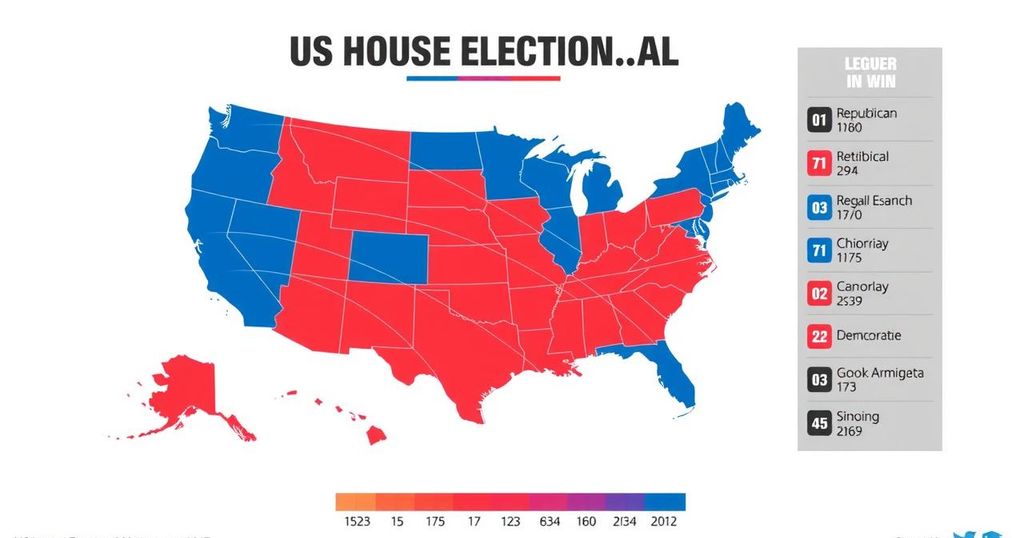Republicans Secure Majority in 2024 House Elections
In the 2024 House elections, Republicans have successfully maintained control, holding onto key seats across various states. While the party’s majority stands at 220 seats against the Democrats’ 215, the implications of a slim majority could impact legislative operations significantly. This election, marked by competitive races and shifting voter sentiments, reinforces ongoing political divides, and the results raise questions about what’s next for governance in the US.
Republican Majority and Its Constituents
Republicans have emerged victorious in the 2024 House elections, maintaining their control, as projections from NBC News confirm. To achieve a majority in the House, a party needs to secure at least 218 seats. Currently, Republicans stand at 220 seats, while Democrats hold 215, indicating that not only have Republicans kept their hold, but they also managed to flip a total of eight seats in this election cycle. This razor-thin margin means the operational difficulties faced previously are likely to persist in the new session, especially as even a few dissenting voices within the party can stall proceedings, something that led to the ousting of the previous Speaker in 2023.
Key States and Electoral Shifts
The latest results show strong performances from Republicans across many key states. For instance, states like Texas and Florida have provided a significant boost to Republican numbers, reflecting deep-rooted party loyalty in these areas. Texas contributed a whopping 25 seats, and Florida delivered 20, cementing the GOP’s stronghold. Yet, Democrats managed to make gains in some unexpected districts, flipping a handful of seats despite the overall losses. For Democrats, holding onto their current 215 seats means they will need to regroup and strategise effectively for the future, especially if they want to challenge the Republican majority in subsequent elections.
Highlighting Competitive Races
Several key races were watched closely during this election, showcasing both local interests and broader national trends. In Arizona’s 6th District, incumbent Juan Ciscomani defeated Democrat Kirsten Engel, contributing to the Republican hold in a competitive area. Meanwhile, in California’s 22nd District, incumbent David Valadao managed to fend off Democratic challenger Rudy Salas in what had been a closely contested race. Each of these outcomes provides insight into the shifting dynamics within traditionally competitive districts, shedding light on what voters are prioritising as they head to the polls.
Implications of the Republican Majority
The complexity of the House elections reflects a landscape that remains volatile and contentious. As Republicans celebrate their majority, the implications of their control will be felt across various legislative areas, especially when it comes to contentious issues like budget negotiations and healthcare reforms. With the slim majority, Republican leadership will have to navigate their party’s factions carefully to pass any legislation. Ultimately, this election cycle served to reinforce the divide in the American electorate, revealing an increasingly fractured political climate that will impact future governance.
Future Challenges and Voter Sentiment
As we dissect the broader election results, it’s evident that significant shifts are occurring within the political sphere, with many races remaining close and complexities rising. The national strategy employed by both parties has come under scrutiny, leading to a re-examination of voter engagement efforts and grassroots mobilising strategies. In the months to come, the Republican leadership will face challenges in finding common ground and maintaining party unity. The Democrats will likely reflect deeply on their strategy moving forward, while voters increasingly voice their needs for representation amidst rising polarization.
Did Republicans retain the majority in the House?
Yes, as of now NBC News indicates Republicans have 220 seats compared to Democrats’ 215.
What is the current majority margin for Republicans?
The margin is extremely close, making future governance tricky for the Republicans as they will have to manage dissenting opinions within their ranks.
Which states played a key role in these results?
Several key states, including Texas, Florida, and California, were pivotal in boosting Republican seats this election, while Democrats showed resilience in certain districts.
What does this mean for future legislation?
With their current slim majority, Republicans will need to be strategic in passing legislation and addressing intra-party disagreements. Democrats will have to reassess their strategies for the next elections.
How might voter sentiment affect future elections?
Voter sentiment appears deeply divided, leading to challenges for both parties in addressing representation and reconciliation among constituents.




